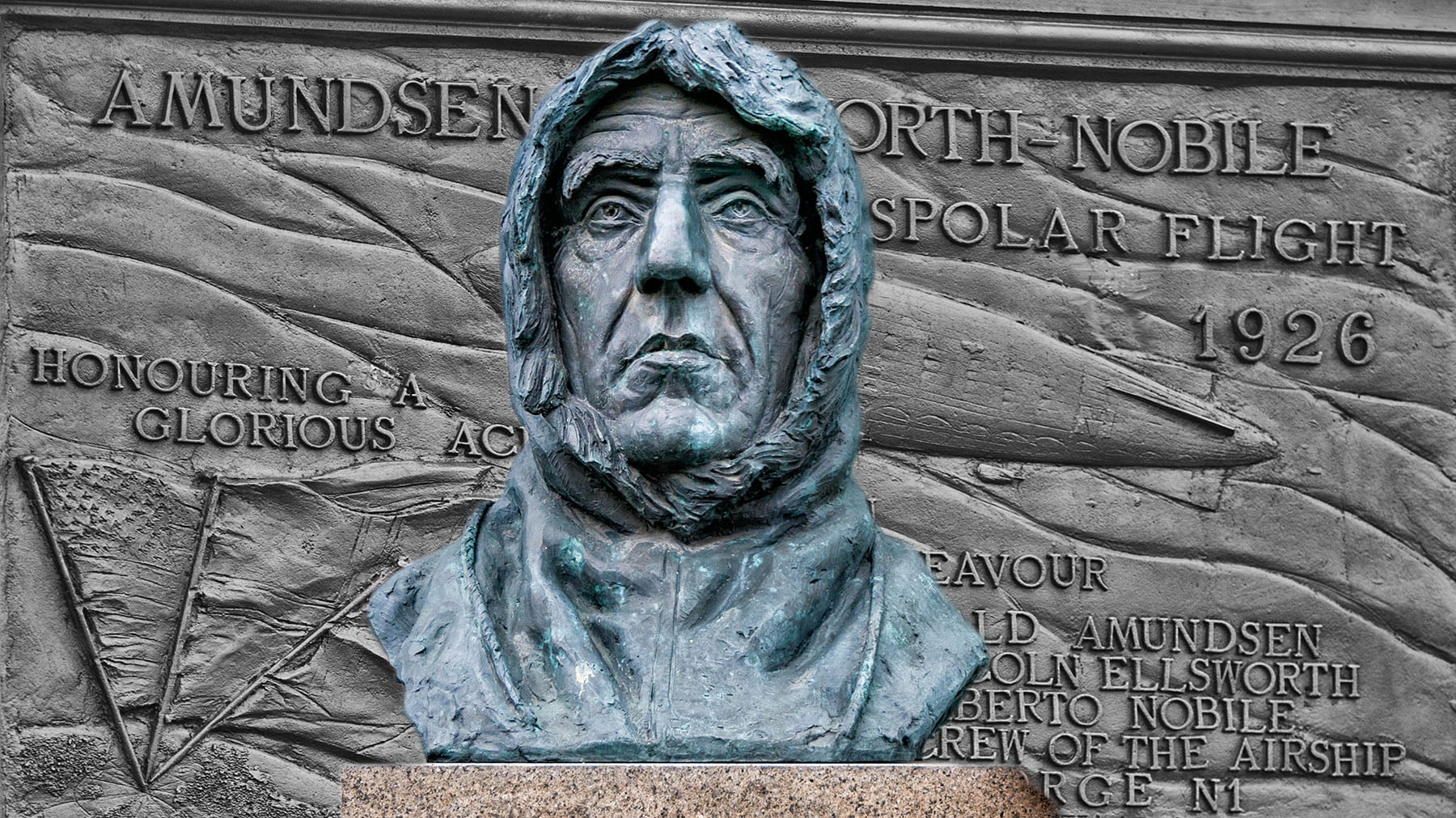He is the first sailor to reach the South Pole: Who is Roald Amundsen?
In 1893, after the death of his mother, he abandoned his medical studies and started working on a seal ship. Then, Amundsen, who spent his whole life in the seas in pursuit of exploration, died by falling into the Arctic Ocean with his plane.

(1872-1928) Norwegian explorer. He was the first sailor to reach the South Pole and cross the Northwest Passage. He was born on July 16, 1872, in Sarpsborg, south of Oslo. His father was a small shipowner. In 1893, after the death of his mother, he abandoned his medical studies and started working on a seal ship. After that, Amundsen, who spent his whole life in the seas in pursuit of exploration, died on June 18, 1928, when his plane crashed into the Arctic Ocean.
Amundsen had a good grasp of sailing the very first time around. In 1897, he was the first mate of a Belgian research ship that stayed all winter in Antarctica. Between 1901 and 1903 he toured the coasts of Novaya Zemlya, Spitzberg (Svalbard), and East Greenland. On his return he had learned a great deal about various sailing techniques, steamships, and scientific nautical methods. With the encouragement of the North Pole explorer Nansen, who was a professor of zoology in Oslo at that time, he set his mind to find the sea route connecting the Atlantic Ocean to the Pacific Ocean.
The hopes of Norwegian sailors, who wanted to monopolize the Far East trade for centuries, to find a shortcut to India and other Far East countries from the west, were dashed by the discovery of the Americas, which stretched like an impenetrable barrier from north to south. Traveling to the north of the continent was extremely difficult due to the ice sheet covering the sea for all four seasons. Starting from the 16th century, the sailors who forced this obstacle in the east-west direction could not go beyond finding a few straits and gulfs. In the end, they decided that there was no passage in that direction. Thereupon, attempts were made in the west-east direction, and the existence of a sea route connecting the Atlantic Ocean to the Pacific Ocean through the Arctic archipelago in the north of the Americas became certain. However, no one returned from John Franklin's (1786-1847) crew of 138, who set out with two ships from the English coast in May 1845. In 1850, Irish naval officer Robert John McClure (1807-1873), captain of the ship sent in search of Franklin, found the entrance to the Northwest Passage around the Banks Islands in northern Canada, but was unable to advance due to glaciers; however, he managed to cross the pass by sea and land, continuing with sleds.
Amundsen was the first to show that this passage could be crossed by ship from start to finish. For this voyage, Amundsen purchased a 22 m long, 47-tonne single mast sailboat named “Gjöa” and set sail from Oslo on 16 June 1903 and two years later sailed to the Beaufort Sea, the landward part of the Arctic Ocean. what was to arrive was spring. In 1905 he made an 800 km observation flight over Greenland, anchoring near Herschel Island. By the time he finally arrived at Nome in Alaska on August 30, via the Bering Strait, the Northwest Passage was now completely crossed.
Amundsen, who started the preparations for the journey to the North Pole right after, heard that the US explorer Peary had reached the North Pole on April 6, 1909, changed his plan and this time set out for the South Pole. With his ship "Fram" he reached Edward VII Land in Antarctica in 1910. The spot where he camped on October 20, 1911, with his crew of four and 52 dogs pulling the sleds, was some 90km closer to the pole than the British team led by Robert Scott, who had set out for the same purpose. Departing from here on October 29, the team planted the Norwegian flag on the South Pole on December 14, 1911, without much difficulty. Beginning the return journey on December 17, Amundsen completed the 1,860 miles (3,400 km) sea route in 99 days. Scott and his team, who followed a different path than Amundsen, would only reach the pole on January 17, 1912.
Amundsen, who founded a shipping company when he returned to Norway, aimed to reach the Arctic this time by air. In 1925, in a flight with the US explorer Lincoln Ellstvorth, they came within 280 km of their destination. The following year, they took the Italian aviator Umberto Nobile with them, and took off from Spitzberg in a balloon called "Norge", and on May 12, 1926, on the same day as the American polar explorer Byrd, they succeeded in crossing the North Pole for the first time from the air, at Point Narrow in Alaska. they landed.
When Amundsen learned that Nobile, who was flying to the North Pole on an airship in 1928, had crashed, he set out on a small plane on June 16 to find his missing friend. Although one of the rescue teams found Nobile and his friends, Amundsen was never found again after his plane crashed into the Arctic Ocean.
--------------------------------------------------
Roald Amundsen: 11 Fascinating Facts about the Norwegian Polar Explorer
https://www.lifeinnorway.net/roald-amundsen-facts/
